#marguerite d'anjou
Explore tagged Tumblr posts
Text
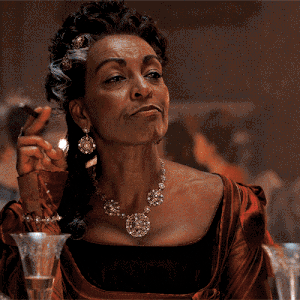
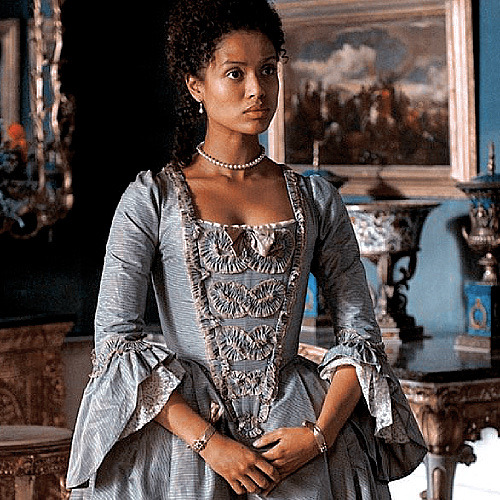
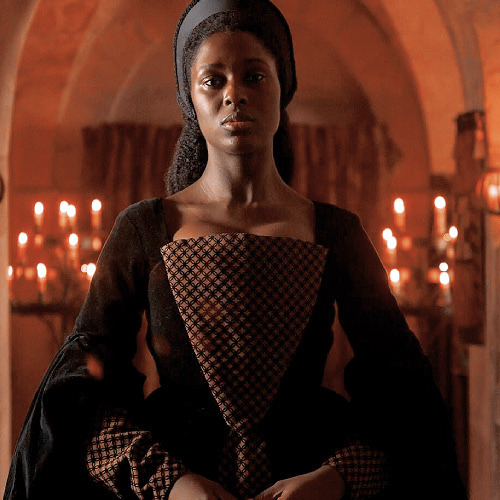


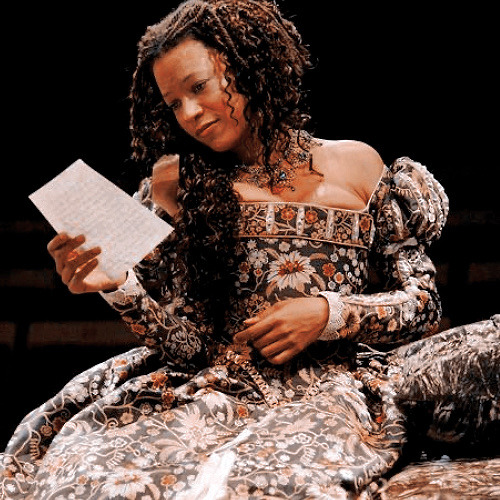

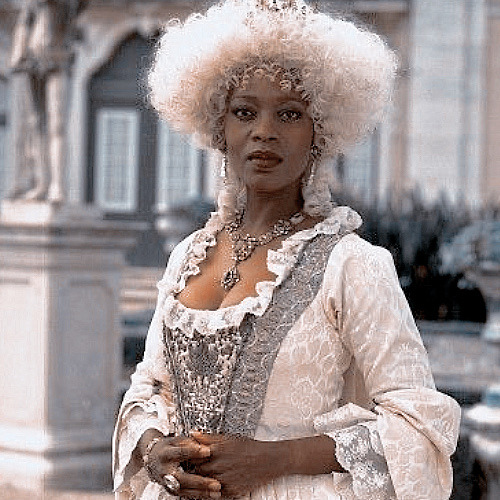

Black Women in Period Costumes
#genuinely love this song#saw that pic of sophie as margurite and here we are#bridgerton#bbc merlin#anne boleyn#the spanish princess#the hollow crown#queen charlotte#lady danbury#guinevere pendragon#marguerite d'anjou#gulliver's travels#alfre woodard#belle 2013#gugu mbatha raw#lina de cardonnes#stephanie levi-john#golda rosheuvel#adjoa andoh#sophie okonedo#angel coulby#jodi benson
2K notes
·
View notes
Text

23 March 1430: Marguerite d'Anjou is born at Lorraine, France. She later became Queen of England by marrying King Henry VI.
#house of lancaster#happy birthday to margaret of anjou#marguerite d'anjou#margaret of anjou#queen of england#house of anjou#plantagenet dynasty
4 notes
·
View notes
Text
Expansion of the royal domain
The way in which the kingdom was ruled in its different provinces had always varied according to the degree that power had been permanently or temporarily devolved to apanage princes and great nobles or that representative assemblies continued to function. It is therefore axiomatic that there was no 'system of government' in the France of the Renaissance. The question is: was there a tendency for the kingdom to become more centralised? R. Bonney has wisely cautioned against the over-use in French history of the term 'centralisation', a term coined in 1794. The main distinction drawn in the early modern period, as Mousnier made clear, was that between the king's 'delegated' and 'retained' justice, the latter covering all the public affairs of the kingdom in which the crown was supreme and the former the private affairs of his subjects. No one would pretend, however, that a clear line of division was ever established between the two.
If we consider the case of the apanages and' great fiefs, for instance, the century from the reign of Louis XI is usually considered definitive in their suppression. In 1480, there were around 80 great fiefs. By 1530 around half of these still existed. The rest were in abeyance or held by members of the royal family. Within the royal house, the apanage of Orleans was reunited to the crown on the accession of Louis XII, although thereafter used periodically for the endowment of the king's younger son, permanently so after the reign of Louis XIV. The complex of territories held by the Bourbon and Bourbon-Montpensier families fell by the treason of the Constable in 1523. Burgundy (and temporarily Artois and Franche-Comté) were taken over in 1477. Among the great fiefs, the county of Comminges was united to the crown on the death of count Mathieu de Foix in 1453, the domains of the Armagnacs (such as the county of Rodez) were confiscated on the destruction of Jean V at Lectoure in 1473. They found their way by the reign of Francis I into the hands of the royal family, through the marriage of Jean V's sister to the count of Alençon. The last Alençon duke, Charles, married Francis I's sister, Marguerite of Angoulême, and Alençon's sister, Françoise, married duke Charles of Vendôme, grandfather of Henry IV. Brittany was acquired through war and marriage alliance in the 1490s, Provence and the domains of the house of Anjou after the death of king René and then of Charles d'Anjou in 1481. The archives of the Chambre des comptes of Anjou for the early 1480s give ample evidence of the king's determination to exploit his new acquisition as soon as possible.
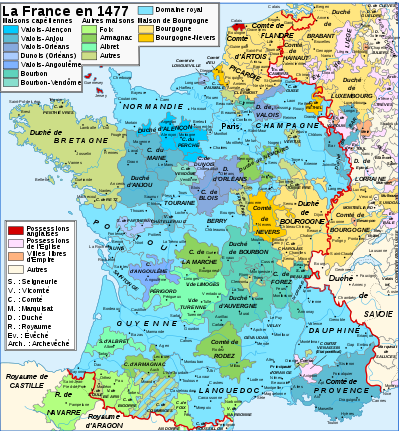
It should not be assumed that the crown pursued a consistent determination to lay hands on all these territories and rule them directly. There was usually a more or less lengthy period of adjustment to a new status. Some apanages and territories taken over by Louis XI were absorbed into the general administration of the rest of the kingdom. This was clearly the case with Burgundy and Picardy-Artois in 1477, both of them in the area under the jurisdiction of the Parlement of Paris. Yet even here, Louis XI had to tread warily in winning over the support of the regional nobility and discontent was apt to break out until the end of the fifteenth century. On Louis's death, for instance, a rising occurred in Picardy at Bertrancourt near Doullens, with cries of 'there is no longer a king in France, long live Burgundy!' The absorption of Artois proved to be an impossible undertaking and had to be renounced in 1493.
Elsewhere, absorption of apanages that were distant from the centre of royal power left affairs locally much as they had been before. The little Pyreneen county of Comminges was governed much as it had been under its counts, with privileges confirmed by Charles VIII in 1496. Only with the work of royal commissioners in the tax-assessing process in the 1540s, the first time an outside power had actively intervened in the affairs of the local nobility, did this begin to change. Auvergne, an apanage raised to a duchy in 1360, was confirmed to the Bourbons in 1425 on condition that their whole domain became an apanage. The duchy was confiscated from the Constable in 1523 but transferred by the king to his mother in 1527 and only absorbed into the royal domain in 1531. Even after that, it formed the dower of Charles IX's queen and then part of the apanage of François d'Anjou, his brother. In the contiguous county of Forez, also confiscated in 1523, little local opposition emerged to the change of regime; although the local chambre des comptes was shortly suppressed, most local judicial officials, along with the entire administrative structure, were retained. Except for a few partisans of the Constable, it seems that there was no great upheaval. Louise de Bourbon, the Constable's sister and princess of La Roche-sur-Yon, demanded a share of the inheritance - Forez, Beaujolais and Dombes. Beaujolais and the principality of Dombes eventually went to Louise's son, Montpensier.
The county of Auvergne, enclaved in the duchy, was held by the duke of Albany in his wife's name, and was then inherited from the last of the La Tour d'Auvergne family by Catherine de Medici. Catherine brought it to the crown by her marriage with Henri II in 1533 but she continued to administer it as her own property. She left it to Charles IX's bastard, Charles de Valois, but her daughter Marguerite made good her claim to it in 1606 and it only entered the royal domain definitively when she willed it to Louis XIII.
After her marriage to Charles VIII in 1491, Brittany was administered as her own property by queen Anne, technically still duchess but in reality sharply circumscribed in her power, until her husband's death restored some of her freedom of action in 1498. Having already established friendly relations with Louis XII when he was still duke of Orleans, she was prepared to accept his offer of marriage after the annulment of his marriage to Louis Xl's daughter, Jeanne, had been agreed. The contract which accompanied the marriage in January 1499 tied the duchy to the crown provisionally on condition that it always passed to the second son of the marriage, while in the absence of issue the duchy was to revert to Anne's heirs on her own side. Anne was able to act rather more independently during her marriage to Louis XII though the conditions of the contract were not observed. On her death Brittany was inherited by her elder daughter Claude, wife of Francis I, who transmitted her rights to her son the dauphin. The queen had, however, transferred the government of the duchy to her husband in 1515 and he continued to rule it in the name of his son François on Claude's death, entitling acts as 'legitime administrateur et usufructuaire' of his son's property. When the dauphin's majority in 1532 brought the question of the imminent personal union of the duchy to the kingdom to the foreground, it was arranged for the Breton estates to 'request' full union with France but on terms which guaranteed Breton privileges and maintained the principle that the dauphin would be duke of Brittany. Only in 1536, on the death of the dauphin, was the union with the kingdom complete and no more dukes were crowned at Rennes. What had been done was the annulment of the Breton succession law, which included females, in favour of the French royal succession law. Late in 1539, it was decided that the new dauphin Henri would have the government of Brittany 'to govern as he pleases', though the documents were delayed by the king's illness. A 'Declaration' transferring Brittany to Henri was drawn up in 1540. In practice, the government of the duchy seems not to have been much changed.
The lands of the house of France-Anjou posed a complex problem. René of Anjou, titular king of Jerusalem, Sicily, Aragon and Naples, was count of Provence in his own right, of Maine and Anjou as apanagiste and Guise by succession. As early as 1478, Louis was scheming to ensure that king René, who had no surviving son, did not leave his territories of Anjou, Provence and Bar to his grandson, René II of Lorraine, warning the general of Languedoc that his region would be 'destroyed' if Provence fell into other hands. On the 'good' king's death in 1480, most of his domains passed to his cousin Charles IV d'Anjou, count of Maine, who died childless in 1481, when Maine and Anjou reverted to the crown, thereafter to be granted out to members of the royal family such as Louise of Savoy. At the same time Provence was acquired by Louis XI by Charles IV's will and the county of Guise was disputed between the houses of Armagnac-Nemours, Lorraine (heirs of René I of Anjou and successors as titular kings of Jerusalem and Sicily) and Pierre de Rohan, marshal de Gié. From 1481, however, the king ruled in Provence as 'count of Provence and Forcalquier'. The lord of Soliès, Palamède de Forbin, who had persuaded Charles d'Anjou to leave the county to the king, was rewarded with the post of governor. The major change came in 1535 with the edicts of Joinville and Is-sur-Tille on the government of Provence, limiting the scope of the old institutions of the Estates and the Sénéchal and increasing that of the Parlement of Aix in justice and of the royal governor in administration. Curiously, Francis I was reported as having said that he felt an obligation to 'ceux de Guise', the house of Lorraine in France, since Louis XI had despoiled them of their inheritance of Provence and Anjou.
The major surviving complex of apanage lands by the middle of the sixteenth century was that held by Antoine de Bourbon, now first prince of the blood and next in line to the throne after the immediate royal family, and his wife Jeanne d'Albret. These involved a group of territories held by different tenures. The Albret inheritance brought the titular kingship of Navarre with a small fragment of the ancient kingdom of Navarre north of the Pyrénées that was held in sovereignty. In the counties of Foix, Albret and Béarn, the family held effective sway under only the most distant royal sovereignty, though Louis XI saw fit to pose as the protector of the young François-Phébus in 1472. In 1476, he sought to revise local tariffs against Albret interests and in 1480 attempts to levy a taille for the gendarmerie there stirred up a rebellion. In western France, the duchy of Vendôme, erected as late as 1515 to detach it from dependence on the duchy of Anjou, was held as an apanage under rather closer royal supervision. In the north, the complex of lands administered from La Fère-sur-Oise and centring the county of Marle was held directly of the king or of the Habsburg ruler of the Netherlands, rendering the family, to some, unreliable. Practical power stemmed from the holding of the governorships of Picardy and of Guyenne by the Bourbons and Henri d'Albret.
Other independent territories persisted, such as the vicomté of Turenne, where the vicomte (of the La Tour d'Auvergne family) ruled with regalian rights until the eighteenth century, could raise taxes, coin money, make war and render justice as a limited monarch in conjunction with very active local estates.
David Potter - A History of France, 1460-1560- The Emergence of a Nation State
#xv#xvi#david potter#a history of france 1460 1560: the emergence of a nation state#louis xi#louis xii#charles iii de bourbon#mathieu de foix#jean v d'armagnac#françois i#charles iv d'alençon#marguerite d'angoulême#rené d'anjou#charles viii#charles ix#élisabeth d'autriche#louise de bourbon#gilbert de montpensier#catherine de medici#house of la tour d'auvergne#charles de valois#louis xiii#anne de bretagne#jeanne de france#claude de france#charles iv d'anjou#louise de savoie#house of guise#capetian house of bourbon#antoine de bourbon
4 notes
·
View notes
Text
In historical fiction and some popular histories, Edward of Lancaster is often depicted as solely the child of Margaret of Anjou. Often, this is shown through their tendency towards monstrosity or their characterisation as psychopaths. In Annie Garthwaite's Cecily, for instance, Garthwaite adapts Shakespeare's depiction of Margaret's presence as the Battle of Wakefield and adds in Margaret's "infant son" who is said to "dribble" his fingers in the dead York's blood after Margaret orders the "despoiling" of York's body. Garthwaite's version ends up a tale even more lurid and inaccurate than Shakespeare's (Margaret and Edward were in Scotland at the time of the battle). In almost all novels, Edward's name is rendered as "Edouard", often a match for his mother's name being rendered as "Marguerite d'Anjou", as if implying that Edward is not English like the strapping Edward IV or Richard III's son, Edward of Middleton, or even Edward V, but entirely French, like his mother. The so-called mystery over Edward of Lancaster's paternity (and frequent assertion that he was the result of Margaret's adultery) furthers this belief: Edward has no father, he can only be the product of Margaret producing autonomously and this renders both he and his mother monstrous. This monstrosity is sometimes further enhanced by the depiction of their relationship as incestuous (or heavily implied to be). In this essay, I will
#edward of lancaster#margaret of anjou#blog#tw incest mention#philippa gregory AND anne o'brien AND someone who wrote some smutty novels about margaret have all gone there
29 notes
·
View notes
Text

Marguerite d'Anjou, Reine d'Angleterre (1430-1482).
#kingdom of england#margaret of anjou#queen consort#queen of england#house of lancaster#house of anjou#wars of the roses#royaume d'angleterre#maison d'anjou#maison de valois#full-length portrait#full length portrait#royalty
27 notes
·
View notes
Text

I'm back with a new SIX persona. In the wake of my coverage of Elizabeth Wydville there were some requests to cover Marguerite d'Anjou, the Red Queen. But I don't really fancy repeating myself over the Wars of the Roses again for a while so I'll leave that to Patreon to decide in the future.
There were a few influences here, most notably Sophie Okonedo who played Margaret in The Hollow Crown series. But also because at the time of making her initial design I couldn't stop listening to Who's Afraid of Little Old Me by Taylor Swift, I decided that should be her song and I took inspiration from the costumes she's worn on her eras tour. In the reference picture, Taylor is meant to be holding on a pole to steady herself while the platform she's on is moving. I replaced it with a sword.
#six fanarts#digital art#character design#taylor swift#wars of the roses#sophie okonedo#who's afraid of little old me?#eras tour
3 notes
·
View notes
Text
anyone else just not give a shit about marguerite d'anjou or elizabeth woodville
#(ooc: i'm an unspeakable of the oscar wilde sort)#me reading the parts from their pov in sunne and splendour like great! lets go back to richard now! LMAO
5 notes
·
View notes
Text
0 notes
Photo

Richard Plantagenêt, duc d'York
Richard Plantagenêt, 3e duc d'York (1411-1460) était l'homme le plus riche d'Angleterre et l'un des nobles qui déclenchèrent la guerre des Deux-Roses (1455-1487), un conflit dynastique qui dura quatre décennies entre plusieurs rois, reines et barons anglais. Richard, chef de la maison d'York qui s'opposa à ses rivaux de la maison de Lancastre, devint Lord-protecteur du royaume sous Henri VI d'Angleterre (r. de 1422 à 1461 & de 1470 à 1471) lorsque ce roi souffrit d'épisodes de démence. Au départ, Richard souhaitait peut-être seulement triompher de son grand rival, le comte de Somerset (mort en 1455), mais il tenta de s'approprier la couronne et fut vaincu par une armée dirigée par l'épouse d'Henri, la reine Marguerite d'Anjou (morte en 1482). Tué lors de la bataille de Wakefield en décembre 1460, la tête du prétendant fut exposée au bout d'une pique à York. La guerre des Deux-Roses se poursuivit et deux des fils de Richard surpassèrent leur père et devinrent chacun roi: Édouard IV d'Angleterre (r. de 1461 à 1470 & de 1471 à 1483) et Richard III d'Angleterre (r. de 1483 à 1485).
Lire la suite...
1 note
·
View note
Text
Billet spécial n°1 - Les hôtels particuliers de l'île Saint-Louis
Pour célébrer la rédaction du 100ème billet du blog "Plaques Mémoire", j'ai souhaité présenter un format un peu plus libre que les autres publications, en présentant une série de petites plaques commémoratives situées à proximité les unes des autres, sur l'île Saint-Louis, à Paris (75004), et qui évoquent les noms de nombreuses personnalités de l'époque.
L'île Saint-Louis (anciennement île Notre-Dame) est une île située sur la Seine, dans le quatrième arrondissement de Paris. Structurée autour de la rue Saint-Louis en l'île qui la traverse de part en part, elle a fait l'objet d'une vaste opération d'urbanisme au XVIIème siècle et rassemble alors un très grand nombre d'hôtels particuliers qui lui valent le surnom d'"île des palais". Ces bâtiments, riches résidences passant aux mains de différentes familles aisées, connaîtront au fil des années des habitants prestigieux. Les photos montrées ici ne constituent pas une liste exhaustive des hôtels particuliers de l'île Saint-Louis, dont beaucoup ont été préservés et sont de remarquables monuments historiques cachés en plein cœur, comme l'hôtel de Lauzun (situé au 17 quai d'Anjou). Plusieurs de ces hôtels ont été conçus par l'architecte Louis Le Vau (1612-1670), d'ailleurs mentionné sur certaines des plaques commémoratives présentées ici.




















11 quai de Bourbon. Texte de la plaque : 1643. Demeure de Philippe de Champaigne, peintre et valet de chambre de la Reine mère.
13 quai de Bourbon. Texte de la plaque : En 1695, propriété de Louis Joseph de Playbault, seigneur de Villars, capitaine au régiment de la reine.
15 quai de Bourbon : Hôtel Le Charron (ou hôtel de Vitry). Texte de la plaque : Hôtel Le Charron. Contrôleur de l'extraordinaire des guerres en Picardie. Son petit neveu J.J. Charron, marquis de Menars, est beau-frère de Colbert. Le peintre Émile Bernard y a résidé.
31 quai de Bourbon. Texte de la plaque : Emplacement de la propriété du fils de Théophraste Renaudot, médecin de Louis XIII, commissaire général des pauvres, fondateur du journalisme. L'écrivain Charles-Louis Philippe y a résidé.
18-20 quai d'Orléans : Hôtel Rolland. Texte de la plaque : Hôtel Rolland. En 1775 propriété de Étienne Françis Turgot, marquis de Soumont, gouverneur de Cayenne et de la Guyanne
16 quai de Béthune. Texte de la plaque : Construit en 1647. En 1728 très haute et très puissante dame Marguerite Thérèse Rouillé, princesse de Poix, veuve de très haut et très puissant seigneur Monseigneur Armand Jean Duplessis, duc de Richelieu et de Fronsac, pair de France, chevalier des ordres du Roy, lègue cet hôtel à son beau-fils LF Armand de Vignerod, futur maréchal de Richelieu
28 quai de Béthune : Hôtel Aubert-Perrot. Texte de la plaque : 1640. Maison de M. Aubert, contrôleur des rentes de l'Hôtel de ville. Façade du XVIIIème siècle
5 quai d'Anjou. Texte de la plaque : Petit hôtel de Marigny, élevé en 1640. Habité par Rennequin, créateur de la Machine de Marly
7 quai d'Anjou. Texte de la plaque : 1642 Hôtel construit pour Jacques Brebart Marchand de Fer. Siège de la Corporation des Maîtres Boulangers depuis 1843. Le bâtiment abrite encore aujourd'hui les locaux du Syndicat des Boulangers du Grand Paris.
11 quai d'Anjou. Texte de la plaque : Construit vers 1645 pour Nicolas Lambert de Thorigny. Louis Le Vau architecte. Acquis en 1945 par Henri Digard.
15 quai d'Anjou. Texte de la plaque : Vers 1645 hôtel construit pour Nicolas Lambert de Thorigny, président a la Chambre des Comptes. Louis Le Vau, architecte présumé.
23 quai d'Anjou. Textes des plaques : Hôtel ci-devant du Président Perrot et En 1642 ici demeura le Sieur Gabriel Sionite, Maronite du Liban, professeur d'arabe au Collège de France
27 quai d'Anjou. Texte de la plaque : 1644. Sur l'emplacement acheté en 1621 par Salomon de Caux, architecte du roi Louis XIII, Simon le Bossu, Maitre des Comptes, construit cet hôtel où vécut en 1691 Nicolas II Sainctôt, Introducteur des Ambassadeurs
33 quai d'Anjou. Texte de la plaque : 1640. Maison de Marin Le Roy, Sieur de Gomberville, titulaire du 21e fauteuil à la Fondation de l'Académie française
38 rue Saint-Louis-en-l'Île. Texte de la plaque : En 1775, Gilles Gomin maître tapissier acquiert de très haute et très puissante dame Madame Isabelle Louise Juvénal de Harville des Ursins de Tresnel, marquise de la Chastre
19 rue des Deux Ponts. Texte de la plaque : Maison de l'Image Saint-Louis. Abrite en 1642 le tavernier Framery, en 1742 le notaire Deshayes
9 rue Poulletier: Hôtel de Gillier. Texte de la plaque : Hôtel de Gillier. Construit de 1637 à 1640 par Louis Le Vau, père et fils, pour Melchior de Gillier, seigneur de Lagny, conseiller du roy Louis XIII
6 rue de Bretonvilliers : Hôtel de Bretonvilliers. Textes des plaques : Petit hôtel Bretonvilliers, 1639 et Pavillon de l'ancien hôtel de Bretonvilliers attribué à jean 1° Androuet du Cerceau, 1642
0 notes
Photo


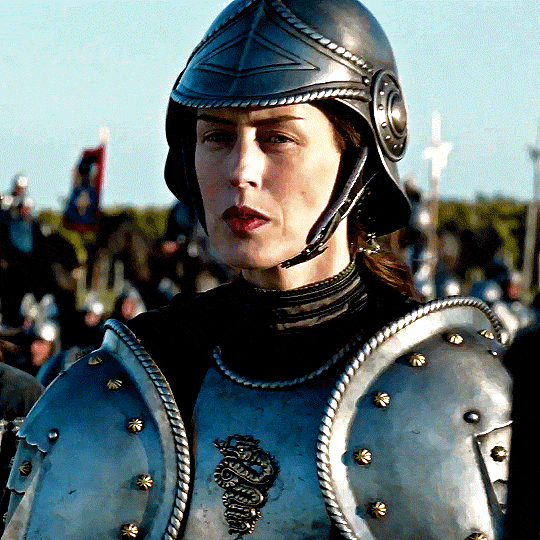


· HISTORICAL WOMEN IN ARMOUR ·
Alicia Borrachero as ISABEL I DE CASTILLA The Spanish Princess (2019-2020) · By Phoebe De Gaye
Sophie Okonedo as MARGUERITE D'ANJOU The Hollow Crown (2016) · By Nigel Egerton
Gina Mckee as CATERINA SFORZA The Borgias (2011-2013) · By Gabriella Pescucci
Laura Morgan as JEANNE D'ARC The Hollow Crown (2016) · By Nigel Egerton
Cate Blanchett as ELIZABETH I Elizabeth: The Golden Age (2007) · By Alexandra Byrne
#the spanish princess#thespanishprincessedit#tspedit#the hollow crown#thehollowcrownedit#thcedit#the borgias#theborgiasedit#elizabeth the golden age#elizabethedit#isabel i de castilla#isabella i of castille#marguerite d'anjou#margaret of anjou#caterina sforza#jeanne d'arc#joan of arc#elizabeth i#elizabeth i of england#alicia borrachero#sophie okonedo#gina mckee#laura morgan#cate blanchett#mine#costume#costumes#whew a lot to tag#women tag
3K notes
·
View notes
Photo

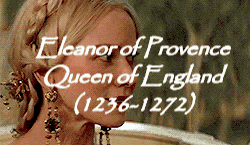


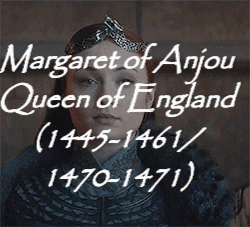



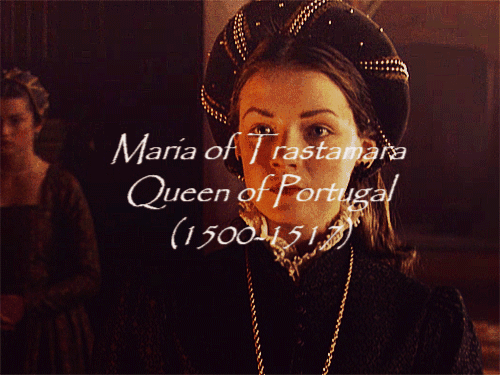
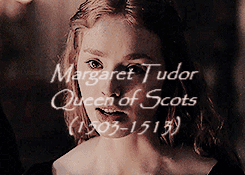
𝘚𝘰𝘮𝘦 𝘰𝘧 𝘵𝘩𝘦 𝘧𝘢𝘷𝘰𝘶𝘳𝘪𝘵𝘦 𝘲𝘶𝘦𝘦𝘯𝘴 𝘵𝘩𝘳𝘰𝘶𝘨𝘩𝘰𝘶𝘵 𝘩𝘪𝘴𝘵𝘰𝘳𝘺.
#Emma of Normandy#Katheryn Winnick#Eleanor of Provence#Naomi Watts#Marguerite de Provence#Margaret of Provence#Rebecca Ferguson#Joanna of Navarre#Joan of Navarre#Eleanor of Portugal#Eleanor of Avis#Holy Roman Empress#Empress Eleanor#Marguerite d'Anjou#Margaret of Anjou#Queen Margaret#Sophie Turner#Elizabeth of York#Elizabeth Plantagenet#Queen Elizabeth#Sophia Myles#Anne of Brittany#Anna de Bretagne#Queen Anne#La reine Anne#la bonne reine anne#Scarlett Johanson#Maria of Trastamara#Maria of Aragon#Maria of Castille
47 notes
·
View notes
Text

“A number of the men attendant on them in Scotland at this time had met their wives while in royal service: Giles St Lowe, Sir Robert Whittingham and Sir William Vaux were all married to women who had long served Margaret.
Whittingham's wife Katherine had been one of Margaret's 'damsels' in 1452, and he himself had served every member of the family, working as one of Henry's ushers before becoming keeper of the queen's great wardrobe and receiver-general for Prince Edward.
Giles St Lowe, who was married to another 'damsel', Edith, had been a squire in Margaret's household and an esquire of the king. Sir Edmund Hampden, another stalwart in Edinburgh, had served Margaret since she arrived in England in 1445 and in 1458 was made Prince Edward's chamberlain."
Source: Johnson, Lauren. “Shadow King: The Life and Death of Henry VI”.
#margaret of anjou#queen margaret of england#queen margaret of anjou#marguerite d'anjou#marguerite r.#queen marguerite#reine marguerite d'angleterre#plantagenet dynasty#house of lancaster#henry vi#henry vi of england#historian: lauren johnson
6 notes
·
View notes
Quote
And on the Monday after noon the Queen came to him, and brought my Lord Prince with her. And then he asked what the Prince's name was, and the Queen told him Edward; and then he held up his hands and thanked God thereof. And he said he never knew him till that time, nor wist not what was said to him, nor wist not where he had be whiles he hath be sick till now. And he asked who was godfathers, and the Queen told him, and he was well apaid.
Edmund Clere to John Paston I, 9 January 1455 (Firsthand description of Henry VI's meeting his infant son for the first time after coming out of his "catatonic state" [unknown illness which remains a mystery])
#The Paston Letters#I love reading other people's mail#Especially when it gives me adorable tidbits about Henry VI meeting his baby son#Henry VI#Queen Margaret#Margaret of Anjou#Marguerite d'Anjou#Edward of Westminster#Edward of Lancaster#Edward Prince of Wales#Edmund Clere#John Paston I#9 January 1455
15 notes
·
View notes
Photo
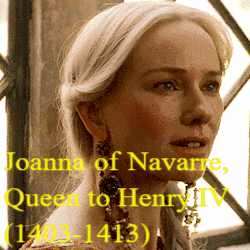
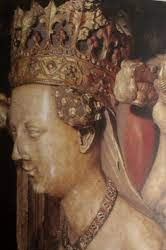

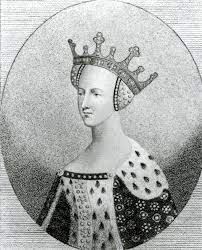


『 ♛ 𝘓𝘢𝘯𝘤𝘢𝘴𝘵𝘳𝘪𝘢𝘯𝘴 𝘘𝘶𝘦𝘦𝘯𝘴 𝘰𝘧 𝘌𝘯𝘨𝘭𝘢𝘯𝘥 ♛ 』
(𝟣𝟦𝟢𝟥-𝟣𝟦𝟨𝟣)
1. 𝑁𝑎𝑜𝑚𝑖 𝑊𝑎𝑡𝑡𝑠 𝑎𝑠 𝐽𝑜𝑎𝑛𝑛𝑎 𝑜𝑓 𝑁𝑎𝑣𝑎𝑟𝑟𝑎, 𝑄𝑢𝑒𝑒𝑛 𝑐𝑜𝑛𝑠𝑜𝑟𝑡 𝑡𝑜 𝐾𝑖𝑛𝑔 𝐻𝑒𝑛𝑟𝑦 𝐼𝑉.
2.𝐶𝑙𝑒́𝑚𝑒𝑛𝑐𝑒 𝑃𝑜𝑒́𝑠𝑦 𝑎𝑠 𝐾𝑎𝑡𝘩𝑒𝑟𝑖𝑛𝑒 𝑜𝑓 𝑉𝑎𝑙𝑜𝑖𝑠, 𝑄𝑢𝑒𝑒𝑛 𝑐𝑜𝑛𝑠𝑜𝑟𝑡 𝑡𝑜 𝐾𝑖𝑛𝑔 𝐻𝑒𝑛𝑟𝑦 𝑉.
3. 𝐷𝑎𝑖𝑠𝑦 𝑅𝑖𝑑𝑙𝑒𝑦 𝑎𝑠 𝑀𝑎𝑟𝑔𝑎𝑟𝑒𝑡 𝑜𝑓 𝐴𝑛𝑗𝑜𝑢, 𝑄𝑢𝑒𝑒𝑛 𝑐𝑜𝑛𝑠𝑜𝑟𝑡 𝑡𝑜 𝐾𝑖𝑛𝑔 𝐻𝑒𝑛𝑟𝑦 𝑉𝐼.
#House of Lancaster#Lancaster#Lancastrians#Plantagenets#Plantagenet Dynasty#Queens consorts#Lancastrians queens#Queen Joanna#Queen Katherine#Queen Margaret#Joanna of Navarra#Joan of Navarra#Jeanne de Navarre#Jeanne d'Évreux#Jeanne de Bretagne#Katherine of Valois#Katherine de Valois#Margaret of Anjou#Marguerite d'Anjou#red queens#Naomi Watts#Clémence Poésy#daisy ridley#fan cast#edit
34 notes
·
View notes
Photo
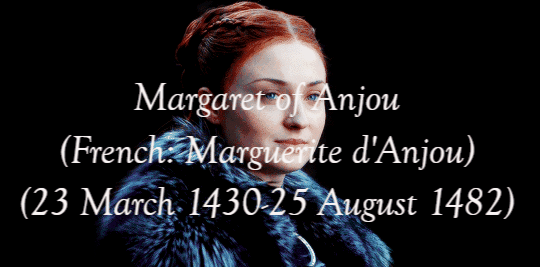
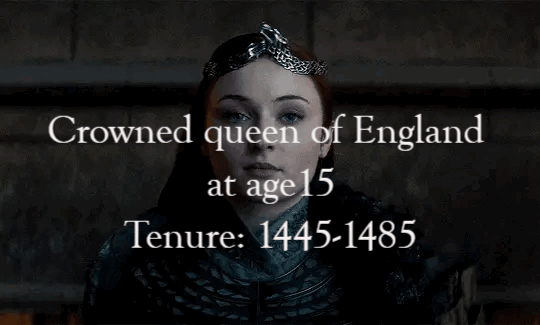

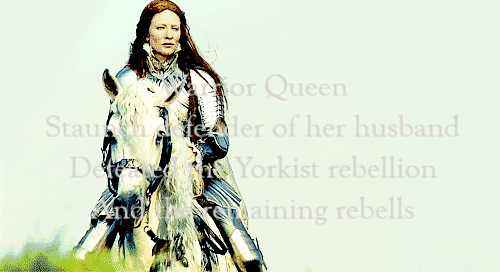

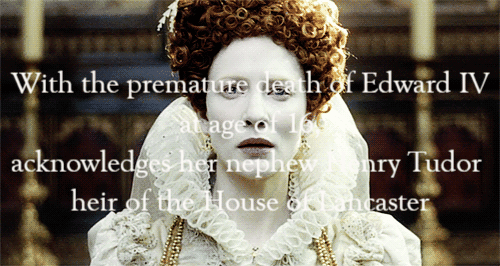
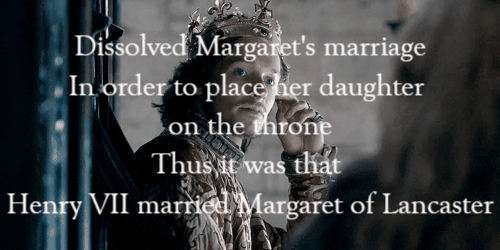
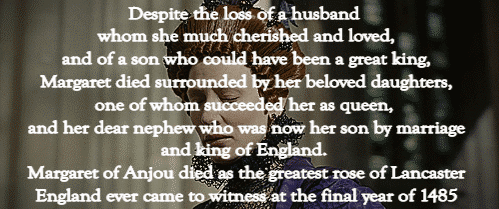
Tʜᴇ AU·s I·ᴅ ʟɪᴋᴇ ᴛᴏ sᴇᴇ﹐ ᴘᴀʀᴛ II ﹕Mᴀʀɢᴀʀᴇᴛ ᴏғ Aɴᴊᴏᴜ﹐ ᴛʜᴇ ᴠɪᴄᴛᴏʀɪᴏᴜs ϙᴜᴇᴇɴ ᴏғ Eɴɢʟᴀɴᴅ.
[ 𝑆𝑜𝑝𝘩𝑖𝑒 𝑇𝑢𝑟𝑛𝑒𝑟 𝑎𝑠 𝑦𝑜𝑢𝑛𝑔𝑒𝑟 𝑞𝑢𝑒𝑒𝑛 𝑀𝑎𝑟𝑔𝑎𝑟𝑒𝑡;
𝐶𝑎𝑡𝑒 𝐵𝑙𝑎𝑛𝑐𝘩𝑒𝑡𝑡𝑒 𝑎𝑠 𝑜𝑙𝑑𝑒𝑟 𝑞𝑢𝑒𝑒𝑛 𝑀𝑎𝑟𝑔𝑎𝑟𝑒𝑡]
#Alternative Universe#plots#AU storylines#AU history#Margaret of Anjou#Queen Margaret#Marguerite d'Anjou#Queen of England#House of Lancaster#King Henry VI#Henry VI#Sophie Turner#as#young Margaret#Cate Blanchette#as older#Margaret#Chris Pine#as king#Henry#Charlotte Hope#as Margaret#firstly duchess of suffolk#secondly queen of england#loved this really
19 notes
·
View notes